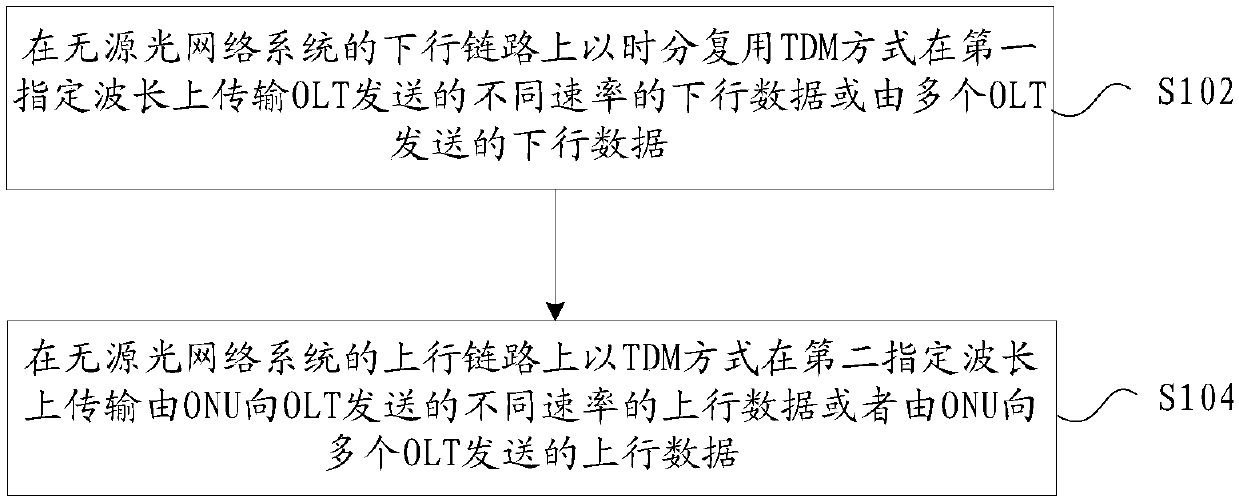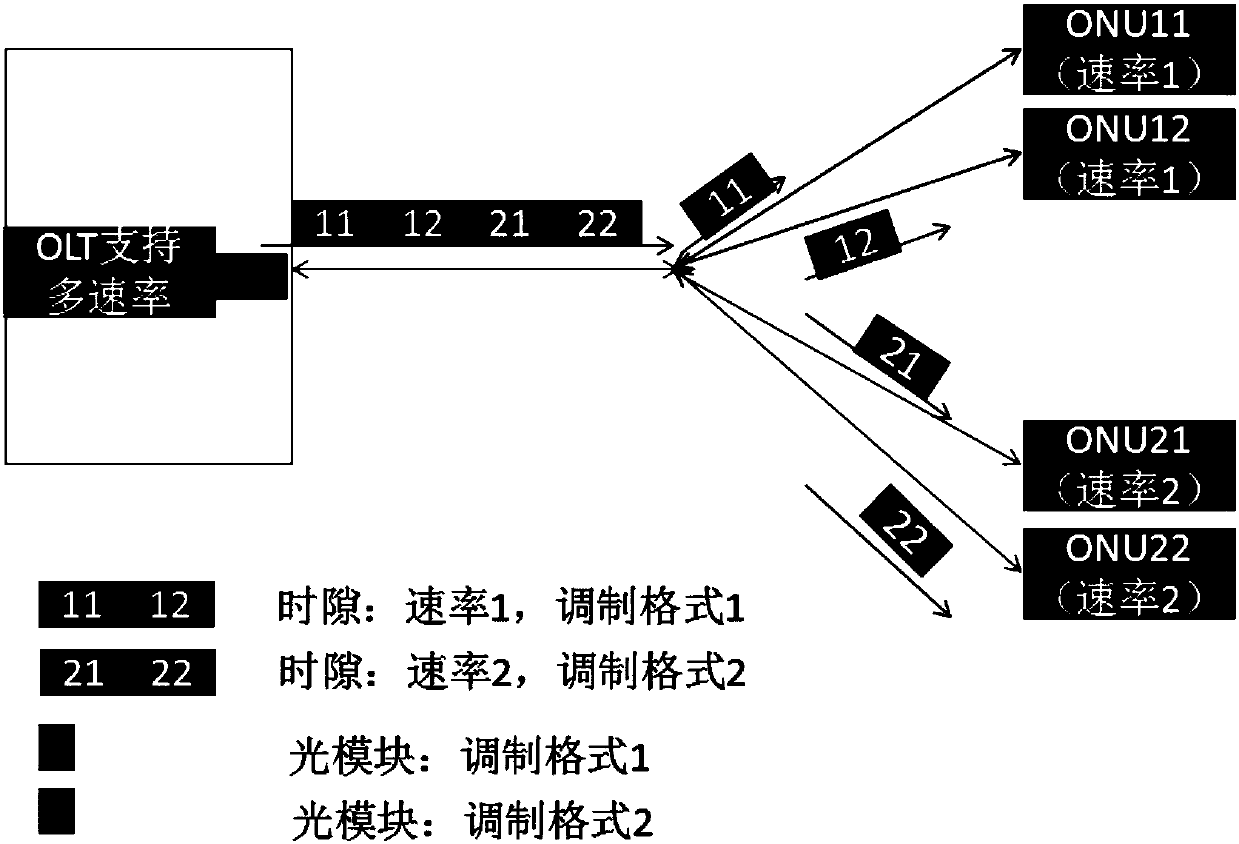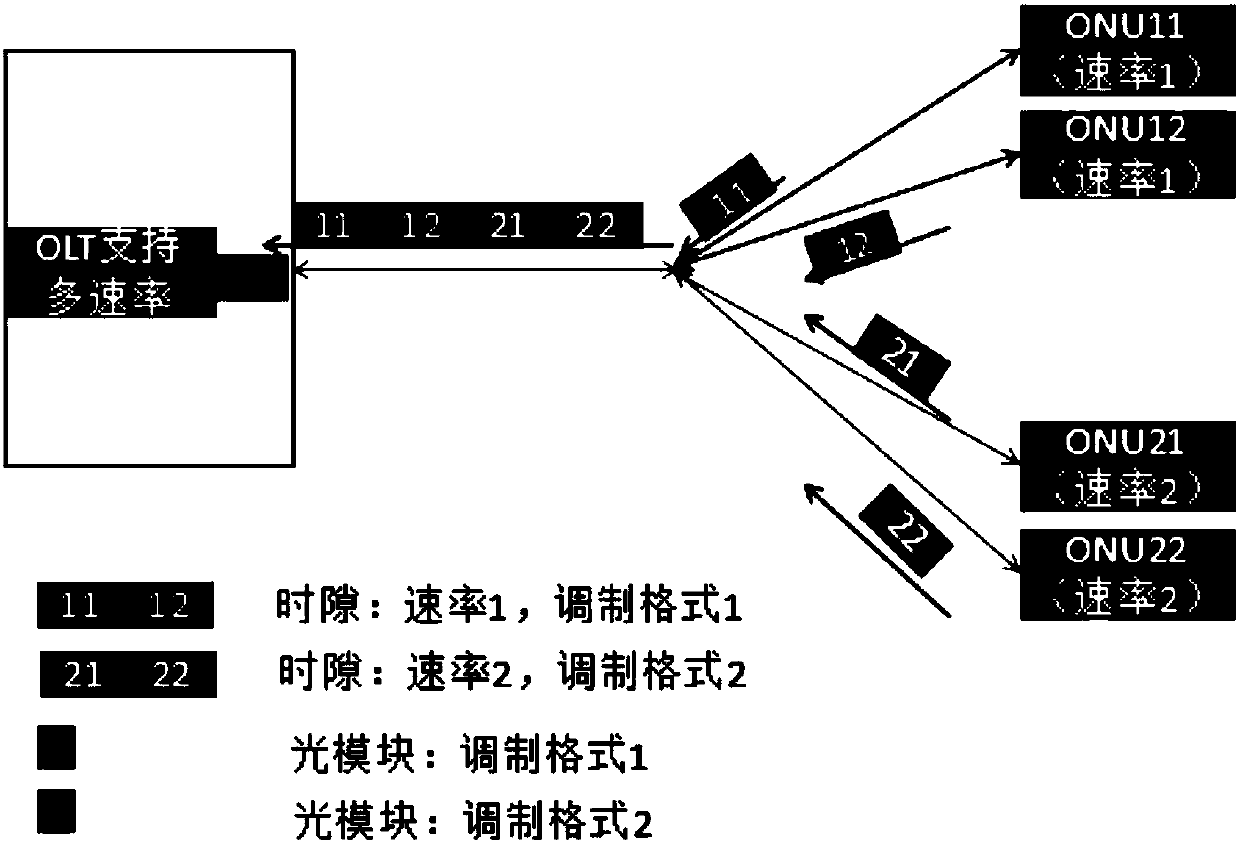Passive optical network system and data transmission method and device
A passive optical network and data technology, applied in the field of communication, can solve problems such as tension, increased difficulty, and no solution proposed, and achieve the effect of coexistence of PON systems and saving wavelength resources
- Summary
- Abstract
- Description
- Claims
- Application Information
AI Technical Summary
Problems solved by technology
Method used
Image
Examples
Embodiment 1
[0084] In the standardization of NGEPON, 25G PON and 50G PON are regarded as the same generation standard. The downlink wavelength is 1330nm, and the uplink wavelength is 1280nm. 25G PON and 50G PON use the same optical module, the same baud rate, and different modulation formats. It is noted that the modulation format may include at least one of the following: a Non-Return to Zero (NRZ for short) modulation format, a 4-level Pulse Amplitude Modulation (PAM4 for short) modulation format, and a Db modulation format. There are many combinations of different modulation formats for 25G PON and 50G PON. For example, when the NRZ modulation format is used, the system works at 25Gbps, that is, symmetrical 25GPON; when the PAM4 modulation format is used, the system works at 50Gbps, that is, symmetrical 50GPON; but not limited to this.
[0085] Except for the different modulation formats, 25GPON and 50GPON have the same uplink and downlink wavelengths, optical modules and baud rates. ...
Embodiment 2
[0088] The 25GPON and 50GPON based on the preferred embodiment 1 can coexist in the same system.
[0089] 1. The downlink of 25G PON and 50G PON works on 1330nm wavelength, adopts TDM working mode, OLT sends 25Gbps rate data and 50Gbps rate data in different time slots respectively;
[0090] (1) The OLT has the ability to allocate downlink bandwidth, and the ONU receives data in the corresponding time slot according to the instructions of the OLT; it should be noted that the ability to allocate downlink bandwidth can refer to the ability of the OLT to: indicate which ONUs in the system are on which time slots Receiving downlink data, but not limited thereto.
[0091] (2) The OLT indicates information such as rate and payload length in the corresponding time slot, and the ONU analyzes the corresponding rate and payload according to the indication.
[0092] 2. The uplink of 25G PON and 50G PON works on 1280nm wavelength, adopts the TDM working mode, the OLT allocates the uplink...
Embodiment 3
[0099] In the standardization of NGEPON, 25G PON and 50G PON are regarded as the same generation standard. The downlink wavelength is 1330nm, and the uplink wavelength is 1280nm. 25G PON and 50G PON use the same optical module and different baud rates. When the rate is high, the system works at 25Gbps, that is, symmetrical 25GPON. When using 50Gbps baud rate, the system works at 50Gbps, that is, symmetrical 50GPON.
[0100] 25GPON and 50GPON have different baud rates, the optical module supports 25GPON and 50GPON adopt the same modulation format, and the uplink and downlink wavelengths are the same.
[0101] It should be noted that both 25GPON and 50GbpsPON can adopt NRZ modulation format, PAM4 modulation format or Db modulation format, but it is not limited to this, as long as the modulation formats adopted by 25GPON and 50GbpsPON are the same.
PUM
 Login to View More
Login to View More Abstract
Description
Claims
Application Information
 Login to View More
Login to View More - R&D
- Intellectual Property
- Life Sciences
- Materials
- Tech Scout
- Unparalleled Data Quality
- Higher Quality Content
- 60% Fewer Hallucinations
Browse by: Latest US Patents, China's latest patents, Technical Efficacy Thesaurus, Application Domain, Technology Topic, Popular Technical Reports.
© 2025 PatSnap. All rights reserved.Legal|Privacy policy|Modern Slavery Act Transparency Statement|Sitemap|About US| Contact US: help@patsnap.com



